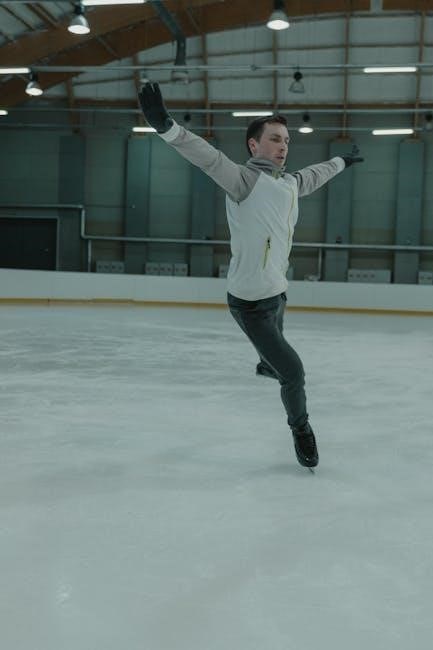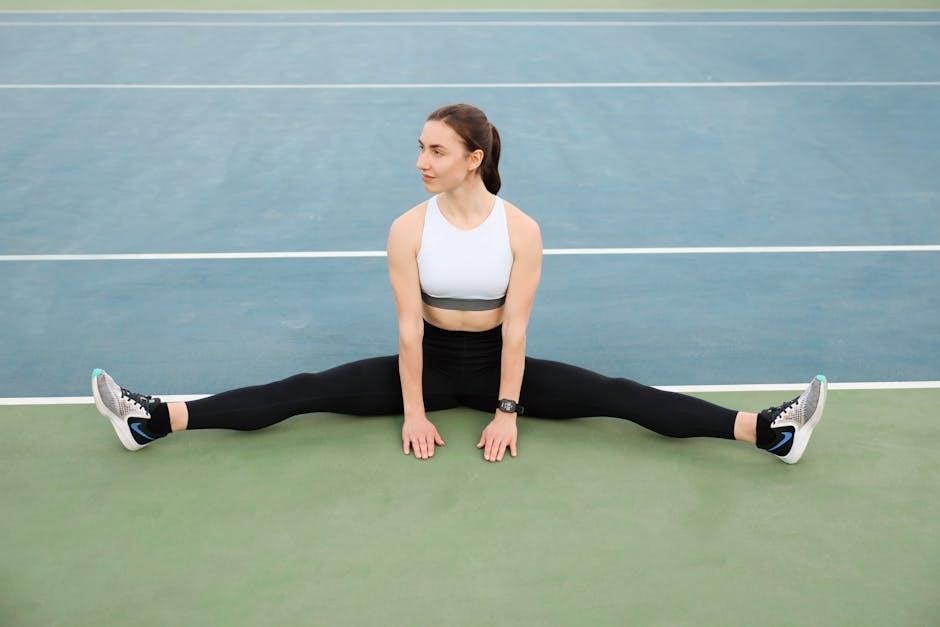Nerve desensitization exercises are techniques used to reduce hypersensitivity in affected areas after injury or surgery. These exercises involve gradual exposure to textures and pressures to promote recovery and improve function.
What is Nerve Desensitization?
Nerve desensitization is a therapeutic approach aimed at reducing hypersensitivity in areas affected by injury or surgery. It involves controlled exposure to various stimuli, such as textures, temperatures, and pressures, to help the nervous system adapt and normalize its response. This method is commonly used to address discomfort or pain in sensitive areas, promoting recovery and improving functional use. Techniques like fabric texture exercises, water therapy, and massage are often employed. The goal is to gradually reduce sensitivity and restore normal sensation over time.

Importance of Nerve Desensitization Exercises
Nerve desensitization exercises are crucial for reducing hypersensitivity and restoring normal sensation in affected areas. They help alleviate discomfort and pain, enabling individuals to regain functional use of the impacted region. By promoting neural adaptation, these exercises enhance recovery and improve quality of life. Regular practice also reduces emotional distress associated with hypersensitivity, making everyday activities more manageable. Consistent engagement in these exercises is essential for long-term improvement and achieving optimal outcomes in nerve rehabilitation.

How Desensitization Works
Desensitization works by gradually exposing nerves to controlled stimuli, starting with minimal discomfort and progressing to stronger sensations. This process helps nerves adapt and reduce hypersensitivity over time.

Principle of Gradual Stimulus
The principle of gradual stimulus involves introducing controlled, increasing levels of sensory input to the affected area. Starting with minimal discomfort, the intensity of textures, pressures, or temperatures is progressively heightened. This approach allows the nervous system to adapt and process sensations more effectively, reducing hypersensitivity over time. Consistency and patience are key, as abrupt changes may overwhelm the nerves. The goal is to retrain the nerves to respond appropriately to stimuli, fostering long-term comfort and functional recovery.
Role of Consistent Stimulus Application
Consistent stimulus application is crucial for effective nerve desensitization. Regular, repeated exposure to specific textures, pressures, or temperatures helps retrain the nervous system. This consistency ensures the nerves adapt gradually, reducing hypersensitivity. Sessions should occur at set intervals, such as every two hours, lasting 10-15 minutes. Over time, this steady approach fosters resilience, enabling the affected area to tolerate normal sensations without discomfort, thereby enhancing functional use and overall recovery.

Exercises for Nerve Desensitization
Nerve desensitization exercises are designed to reduce hypersensitivity through controlled exposure to various stimuli, such as fabrics, water, and pressure, aiding in sensory recovery and functional improvement.
Fabric Texture Exercises
Fabric texture exercises involve rubbing the sensitive area with materials of varying textures, starting with soft fabrics like cotton and progressing to rougher ones like burlap. This gradual exposure helps desensitize the nerves. Patients are advised to begin with fabrics that cause minimal discomfort and gradually introduce coarser textures as tolerance improves. These exercises should be performed every 2 hours for 15-minute sessions. Once the sensation becomes comfortable, the next texture or pressure level can be introduced, ensuring a gentle and progressive approach to sensory recovery.
Water Therapy Techniques
Water therapy techniques involve exposing the affected area to varying water temperatures to reduce sensitivity. Patients are instructed to submerge the area in warm or cool water for 15–20 minutes, gradually introducing more extreme temperatures. This method helps nerves adapt to different stimuli without causing pain. The exercises promote sensory recovery by encouraging the nerves to respond to subtle changes in temperature. Regular water therapy sessions can enhance tolerance and reduce hypersensitivity, aiding in the overall desensitization process.
Massage and Pressure Exercises

Massage and pressure exercises are essential for reducing hypersensitivity and promoting nerve recovery. Patients are advised to start with light touch massages, gradually increasing pressure over time. Techniques include gentle rubbing or pressing the affected area with fingers or soft tools. These exercises help desensitize nerves by exposing them to varying degrees of pressure, reducing discomfort and improving tolerance. Consistent practice enhances sensory function and restores normal tactile perception, making daily activities more manageable. Regular massage sessions are recommended as part of a comprehensive desensitization program.

Progression and Duration of Exercises
Exercises progress gradually, increasing intensity and duration as tolerance improves. Sessions are typically short, repeated regularly to ensure consistent stimulus without causing pain.
Frequency and Session Length
Exercises should be performed every 2 hours for 15-minute sessions to ensure consistent stimulus. Start with gentle textures or pressures and gradually increase intensity as comfort allows. Sessions should be short to avoid overwhelming the nervous system. Consistency is key, with daily repetition essential for progress. Over time, as sensitivity decreases, session duration or frequency may be adjusted. Always follow the recommended progression to avoid discomfort or setbacks.
Transitioning Between Textures and Pressures
Transition between textures and pressures gradually, starting with the least painful stimuli. Once comfort is achieved, progress to slightly more intense textures or pressures. This ensures the nervous system adapts without overwhelming. For example, begin with soft fabrics before moving to coarser materials. Similarly, increase pressure gradually during massage exercises. The goal is to avoid causing pain, allowing nerves to adjust naturally. Proper transition enhances recovery and reduces hypersensitivity effectively over time.
Benefits of Nerve Desensitization Programs
Nerve desensitization programs reduce hypersensitivity, improve functional use of affected areas, and enhance overall recovery. They help restore normal sensation and reduce discomfort, promoting better daily function.
Reducing Hypersensitivity
Nerve desensitization exercises effectively reduce hypersensitivity by gradually exposing the affected area to controlled stimuli. Techniques like fabric texture exercises and water therapy help nerves adapt to sensations, lowering discomfort. Over time, consistent exposure to varying textures and pressures desensitizes the area, reducing pain and discomfort. This controlled approach allows the nervous system to adjust, making everyday activities less painful and improving overall function.
Improving Functional Use of the Affected Area
Nerve desensitization exercises aim to restore normal function to sensitive areas by gradually exposing them to various stimuli. Techniques like fabric texture exercises and water therapy help nerves adapt, enabling better control and use of the affected area. Over time, consistent practice improves dexterity and reduces discomfort, allowing individuals to perform daily tasks with greater ease. This progressive approach enhances functional recovery, making it easier to handle objects, tolerate pressure, and engage in activities without pain or hypersensitivity.
Creating a Nerve Desensitization Exercise PDF Guide
A comprehensive guide should include structured exercises, visual aids, and clear instructions. It should detail techniques like fabric textures and water therapy, ensuring easy patient follow-up.

Structuring the Guide
The guide should be organized into clear sections, starting with an introduction to nerve desensitization. Include detailed exercise descriptions, such as fabric texture exercises and water therapy. Add step-by-step instructions for each activity, along with images or diagrams to illustrate proper techniques. Dedicate a section to progression tips, advising patients on when to increase stimulus intensity. Also, incorporate a section for tracking progress and noting any discomfort. Ensure the layout is visually appealing and easy to follow, with clear headings and concise language for better patient understanding and adherence.

Including Visual Aids and Instructions
Visual aids, such as images and diagrams, are essential for clarifying exercise techniques. Include step-by-step instructions for each activity, like fabric texture exercises and water therapy. Provide examples of textures to use, from soft to rough, and demonstrate proper hand positions. Add before-and-after illustrations to show progress. Use clear, concise language to guide patients through each exercise. Incorporate a section for tracking progress, allowing users to note improvements and adjustments. This ensures the guide is user-friendly and accessible for individuals recovering from nerve sensitivity.

Safety Considerations
Ensure exercises are performed gently to avoid causing pain. Start with light stimuli and gradually increase intensity. Stop if pain occurs and consult a therapist if sensitivity worsens.
Monitoring Pain Response
Monitoring pain response is crucial during nerve desensitization exercises. Patients should note any discomfort or pain, adjusting techniques if sensations become unbearable. Exercises should start with minimal stimuli, gradually increasing intensity. If pain persists or worsens, activities should be paused, and professional guidance sought immediately to avoid further nerve damage or complications. Consistent tracking helps tailor exercises effectively, ensuring a safe and progressive recovery process.
Seeking Professional Guidance
Seeking professional guidance is essential for effective nerve desensitization. Therapists evaluate pain levels and tailor exercises to individual needs, ensuring safety and progress. They provide techniques to reduce hypersensitivity and improve function. Regular consultations help monitor recovery and address challenges promptly. Professional oversight ensures exercises are performed correctly, minimizing risks of overstimulation or injury. Collaborating with therapists enhances the effectiveness of desensitization programs, leading to better outcomes and faster recovery.